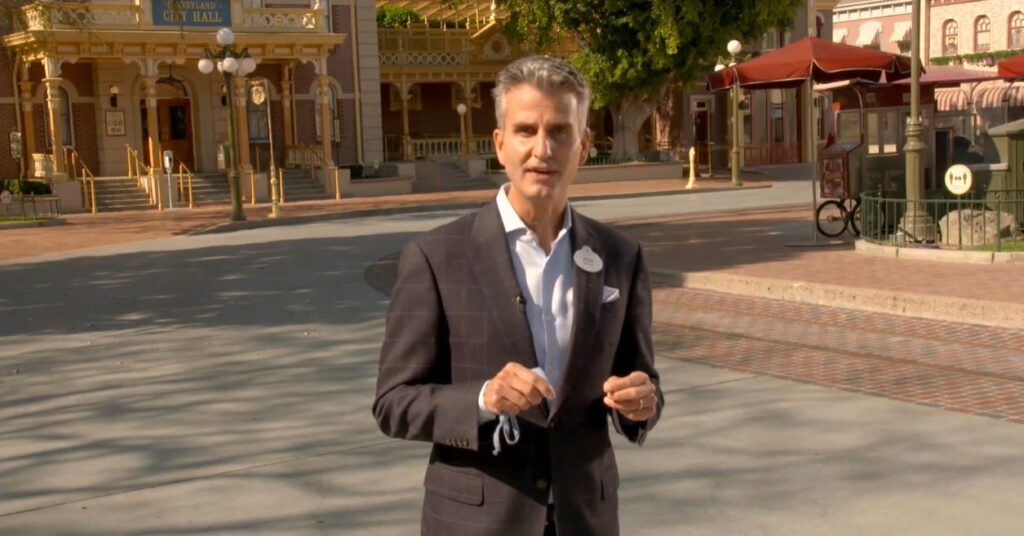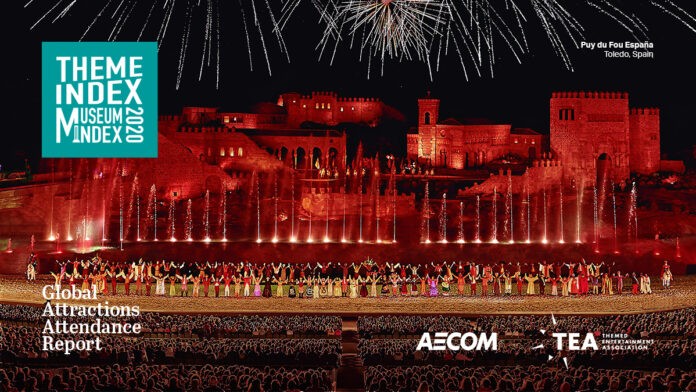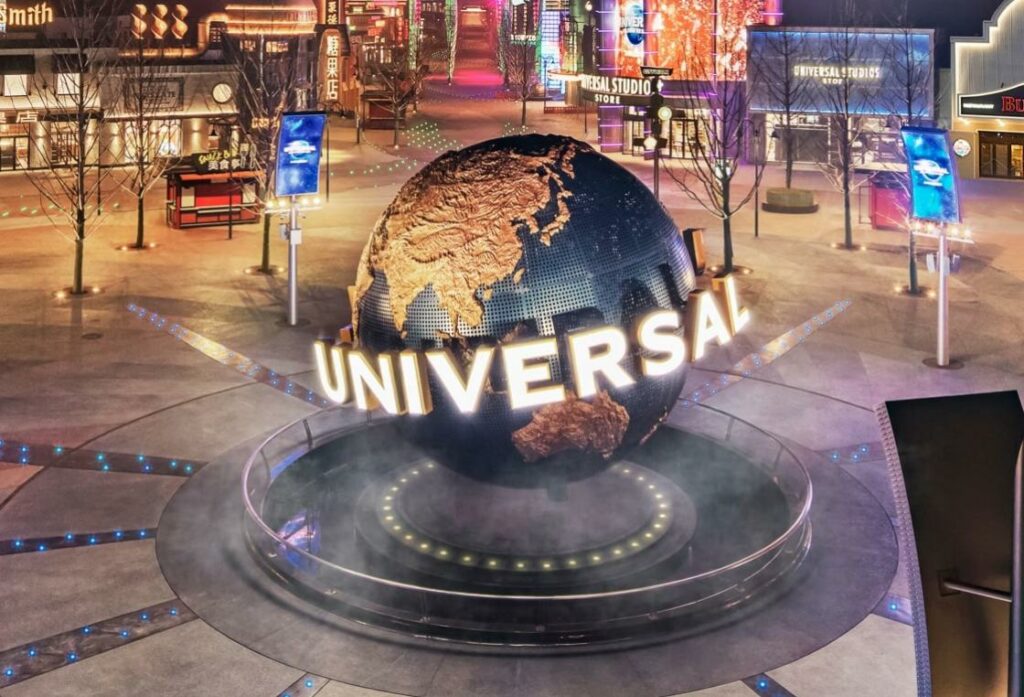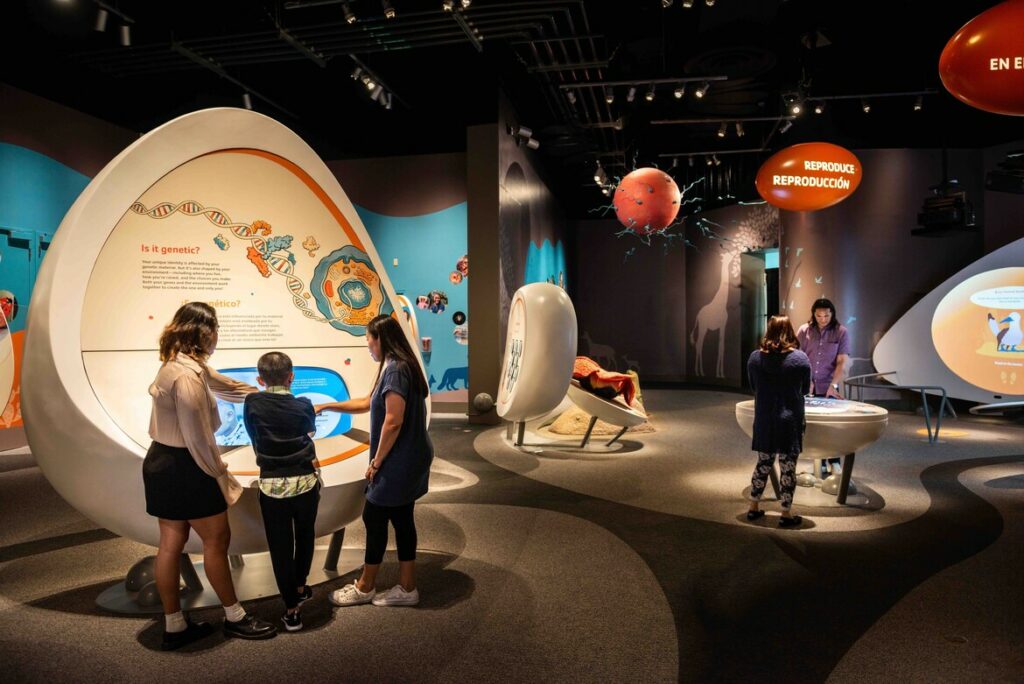by Joe Kleiman
2020 was a year like no other in the recent history of the attractions industry. The global health crisis known as the COVID pandemic created inconsistencies throughout the world. Parks could open in one country or even state or province or municipality, while remaining closed in the next. Meanwhile, some governments enacted much stiffer ordinances than others, including caps on maximum daily attendance or ridership.
These inconsistencies become apparent within the 2020 TEA/AECOM Theme Index, the annual measuring rod for global theme park attendance. The authors decided this year not to rank the parks by the varied 2020 attendances, choosing instead to maintain the 2019 rankings. After all, a park in California that was open for only three months at the beginning of the year cannot be placed on the same level as a Florida park that was closed for only four months and opened during the pivotal summer season.
California restrictions create changes in tourism patterns
In the Americas, there were a few anomalies on attendance loss, such as Brazil’s Beto Carrero World, which reported a drop of 44.1% Most parks, however, experienced much greater losses, in the 60-80% range. The Magic Kingdom Park at Walt Disney World saw a drop of 66.9%, while Disneyland in California, which closed on March 14, 2020 and was not allowed by the state to reopen for over a year, saw a loss of 80.3%

As InPark reported in January 2021, during 2020, the State of California instituted some of the strictest regulations in North America on theme park and attraction openings and operations. This resulted in a significant transition in travel trends. During Outlook Forum, an annual event held in March 2021 by Visit California, the public-private partnership responsible for marketing the state’s tourism, Janet Lamkin (Senior Vice President Market & Community Innovation for United Airlines) and Shane Hodges (Vice President Western Division and International Sales of American Airlines) pointed out that during 2020, two of the nation’s busiest airports – Los Angeles and San Francisco International – were seeing only a fraction of their attendance, primarily due to travel restrictions and significant flight cancellations to and from the Asia-Pacific market. One market in California, surprisingly, saw a huge surge in airflight bookings – Fresno, which acts as a gateway to the Yosemite, King’s Canyon, and Sequoia National Parks. As Californians sought a return to nature, Visit California shifted its emphasis from national and international campaigns to concentrating on residents of the state. The Direct Marketing Organization implemented a “California Roadtrip” campaign, encouraging residents to explore the natural beauty and small communities of the state.
In June 2021, Caroline Beteta, President and CEO of Visit California told InPark: “Visit California’s marketing did pivot toward more landscape imagery and responsible travel messaging as Californians explored closer to home during the pandemic – but the Disney experience is incredibly iconic and foundational to the overall California brand. And of course, consumers were thrilled to see images and news of our state’s theme parks when we could share details of how and when they would reopen.
“For our ‘Dreaming On in California’ campaign to celebrate the state’s reopening, we asked consumers to share what moments and milestones they missed most in 2020, and we heard thousands of heartbreaking stories of canceled plans, scrapped events and lost loved ones. But for so many travelers, Disney was the experience they missed most in 2020.”
On April 1, 2021, the state allowed theme parks to reopen, with COVID restrictions and attendance caps in place. With a minor exception later announced by the California Department of Public Health, attendance was restricted to California residents. Opening guidance for waterparks, which had remained closed during 2020, was announced a few days later.
On June 15, 2021, the state announced the end of COVID restrictions, with theme park restrictions dropped. After a rise of cases in late summer and early fall, several counties instituted new mandates for theme parks, including proof of vaccination, that would implement once attendance surpassed 10,000.
China sees minimal attendance loss and significant growth in new parks; Europe bets on regional
According to the 2020 Theme Index, parks in China tended to fare the best, with the lowest drop-off in attendance from 2019, typically around 50%. Two chains reported significantly less attendance loss – OCT Group at a per-park average of 14% and Fantawild at an average of 20%. As reported previously by InPark, these low national percentages were largely due to the government structure in China which allowed for greater control of citizen activities and attractions operations. China was one of the first countries to implement a COVID-related digital health passport required for attending theme parks. Parks within the Hong Kong-Macau-Zhuhai free trade zone (Ocean Park, Hong Kong Disneyland, Chimelong Ocean Kingdom) saw a much higher percentage of attendance loss, between 60% and 70%. As we reported in January 2020, these parks were heavily impacted by closures during the Spring Festival (Chinese New Year), one of the busiest weeks for domestic and international tourism in the region.
Government oversight led not only to continued park operations, but to growth as well. AECOM specialists Beth Chang (Executive Director – Economics, Asia-Pacific) and Chris Yoshii (Vice President – Economics, Asia-Pacific) wrote in the 2020 Theme Index: “Being hit very early in the pandemic China was the first to implement restrictions and closures. Nonetheless, new parks and attractions continued to open even during the pandemic, though with some delays. China added nearly 20 parks. The most prestigious of these is Universal Beijing, with its September 2021 grand opening. The OCT and Fantawild chains both opened new parks, while Chimelong Paradise expanded. Ocean Park Hong Kong has opened its new, year-round water park, Water World.”
Many territories in Europe and Asia underwent multiple closings, openings, and re-closings as COVID cases and hospitalizations ebbed and flowed. Efteling Park in The Netherlands experienced an attendance loss of only 44.9% from 2019. InPark has reported on the steady year-after-year growth of international visitors to Efteling, primarily from the UK. According to the 2020 Theme Index, the theme park resort reacted to the pandemic by emphasizing its regional audience in marketing efforts.
Museums among hardest impacted
Among the hardest-hit venues in 2020 (due to the pandemic) were museums. Because of their primarily indoor nature, only four of the world’s 60 top-attended venues listed within the 2020 TEA/AECOM Museum Index had a loss of attendance less than 70%. As with theme parks, it becomes difficult to discern the differences in attendance losses as each venue had unique restrictions placed upon it different from those in other countries or municipalities. Three of the top 20 global museums in the Museum Index are located in California. The state-owned California Science Center in Los Angeles saw a drop of 87.7%, while the Getty Center, also in Los Angeles, dropped 81.4% and the California Academy of Sciences in San Francisco 81.8%. Each venue was subject to museum-oriented COVID mandates not only from the state but from their respective counties as well.
Visit California’s Beteta told InPark: “California’s abundance of cultural experiences keep visitors coming back to the state, and exploring the cities where so many of these attractions are found. As we emerge from the pandemic, Visit California is committed to supporting all of our communities and we have plans to put renewed focus on our state’s vibrant urban core, which is home to so many spectacular museums, galleries and theaters. These gateways will continue to experience a slower recovery until business and international travel is back full force. In the meantime, we will continue to encourage Californians and other visitors to visit our ever-evolving cities and discover everything they have to offer.”








